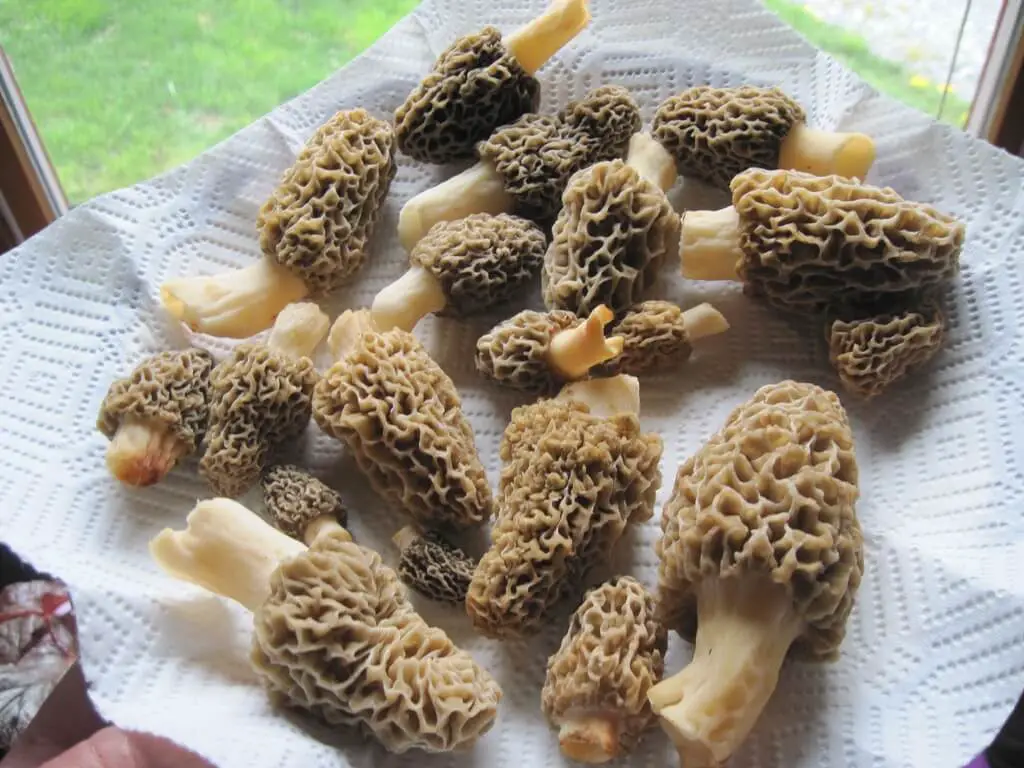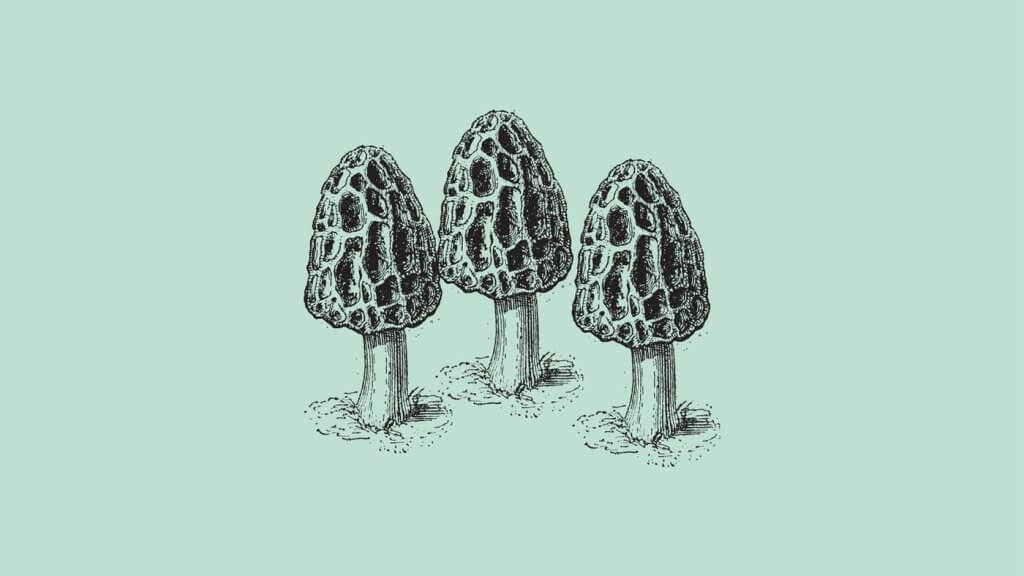The ideal growing environment for morel mushrooms is a cool, moist climate. For successful morel hunting, spring weather with temperatures in the 60s and 70s Fahrenheit during the day and cool evenings in the 40s with scattered rain and cloudy days is ideal.
The specific requirements of morel mushrooms make them perhaps the most challenging and tasty edible mushrooms to forage for.
Morel fruiting bodies appear to be more abundant in areas with woody vegetation, and it is common to find yellow morels (Morchella esculenta) in the vicinity of hickory, linden, elm, or sycamore trees.
For example, during April and May, black morels (Morchella angusticeps) were the first to appear in Michigan, while yellow morels appeared later in the month.
What Are You Foraging For Right Now?
We're thrilled to hear your ideas. What would you like to submit today? Feel free to share your thoughts and experiences with us.
In terms of their preferred habitat, it has been reported that morel mushrooms have been found in Western North America in areas where forest fires have occurred or following periodic wildfires.
Morel Mushroom Soil Temperatures
Morel growth is best in the early spring in the midwest. If you wish to hunt morel mushrooms, you may want to purchase a soil thermometer to obtain an accurate reading of the ground temperature.
Morel mushrooms prefer air temperatures of 60 degrees or higher and soil temperatures of 45 to 50 degrees.
The temperature of the soil primarily determines the season for morels. When the ground temperature is sufficiently warm, the morel season begins, and when the temperature is too high, the season ends.
In most people’s opinion, a temperature of 50 degrees is the ideal temperature for initiating the action.
Some will say 52 or 54, but remember, very adamant people are most likely speaking from anecdotal experience (specific to their geographical location).
Because the temperature varies day to night, it is difficult to predict when 50 degrees will be reached. No matter what the case may be, it lies somewhere within that range of temperatures.
A map may be useful if you do not have the necessary equipment or do not have the time to take soil temperature readings at your morel spots.
The Internet is also helpful in finding information specific to a particular state.
Watch our video to learn all about how to find, forage, and identify morel mushrooms!
Why is temperature important?
When you see a lilac flower early in the spring, that is a sign that perhaps you should visit your favorite morel grow to see if you can find the first morel of the season.
The morels will begin to fruit if the soil temperature rises low to mid-50s for several days in a row, ideally for 5-7 consecutive days/nights.
As soon as the soil warms into the 60s for several days, fruiting will cease, and sightings will decrease.
How does temperature affect morels?
Favorable weather conditions and temperatures facilitate the growth of mycelium.
Mycelium refers to the network of fungal threads that grows underground during the incubation stage of mushroom development.
The temperature affects the growth of the mycelium, which in turn affects the development and harvest of the mushroom.
In spite of the variety of morels, their growing environments do not differ significantly from one another.
For all morel species, a temperature range of 55 to 70 degrees Fahrenheit is required.

What happens if the temperature is too high or low?
It is important to note that morels can be severely affected by temperatures outside the ideal range.
A too high temperature will result in the mushrooms shriveling up and dying.
If the temperature is too low, the mushrooms will not be able to grow properly and will not fruit.
Can you grow morels indoors?
Since 1982, several methods have been developed for growing morel mushrooms indoors. To accomplish this, you can either use a home growing kit or grow in a greenhouse.
Mushrooms can be difficult to grow indoors. Yet, it remains one of the most effective methods of maintaining a stable ambient temperature.
If you are growing morels indoors, it is best to store them in a cool, dark location. You should choose an area where the temperature does not fluctuate significantly, such as an airing cupboard or under the bed.
Alternatively, morels can be grown in a greenhouse. This method is another way of ensuring that morel mushrooms grow in a stable, controlled environment.
Whatever method you choose, ensure that this area is free from as many outside influences as possible. The ideal environment should be free from anything that may cause dramatic changes in temperature, humidity, or illumination.
The temperature cannot be controlled very well when cultivating a wild patch of morels; thus, maintaining a stable temperature will eliminate one potential factor that could affect the growth of your morels.
You can provide the ideal temperature for the growth of your morels by using heating lamps and mats. It is important to note, however, that such heating sources may also have negative effects.
Heating mats, commonly used in mushroom cultivation, tend to dry out the soil. Even though heating lamps provide effective temperature control, they do not distribute heat evenly.
Morel mushroom hunting secrets
Estimate the time at which morels will appear.
Mushroom hunting spots are well-kept secrets. The emergence of morel mushrooms is the result of a combination of climatic factors.
Don’t wait until dawn to hunt morels.
It is a common misconception that you must wait until the sun emerges after a spring rain to find morel mushrooms.
Morels are found in many different locations.
You can usually find them in damp creek bottoms or river bottoms. Look for decayed timber around fallen trees. Consider looking around trees that have recently died.
Old timers also believe that once a tree loses its bark, no morels will grow around it. You should also inspect the inside of gooseberry brambles, and multi-flora rose brambles.
Don’t rely on Mother Nature.
The fact that you found morels last season does not guarantee that you will find them again the following year.
The best way to find morels is to have several locations where you have previously found them.
Ana has always been interested in all things nature and flora. With her expertise in home gardening and interest in foraging, she has been spending her weekends and free time looking for edible native plants, flowers, and fungi. One of her many hobbies includes testing new savory and sweet recipes, juices or teas made from freshly picked plants, wild fruits, or mushrooms.

